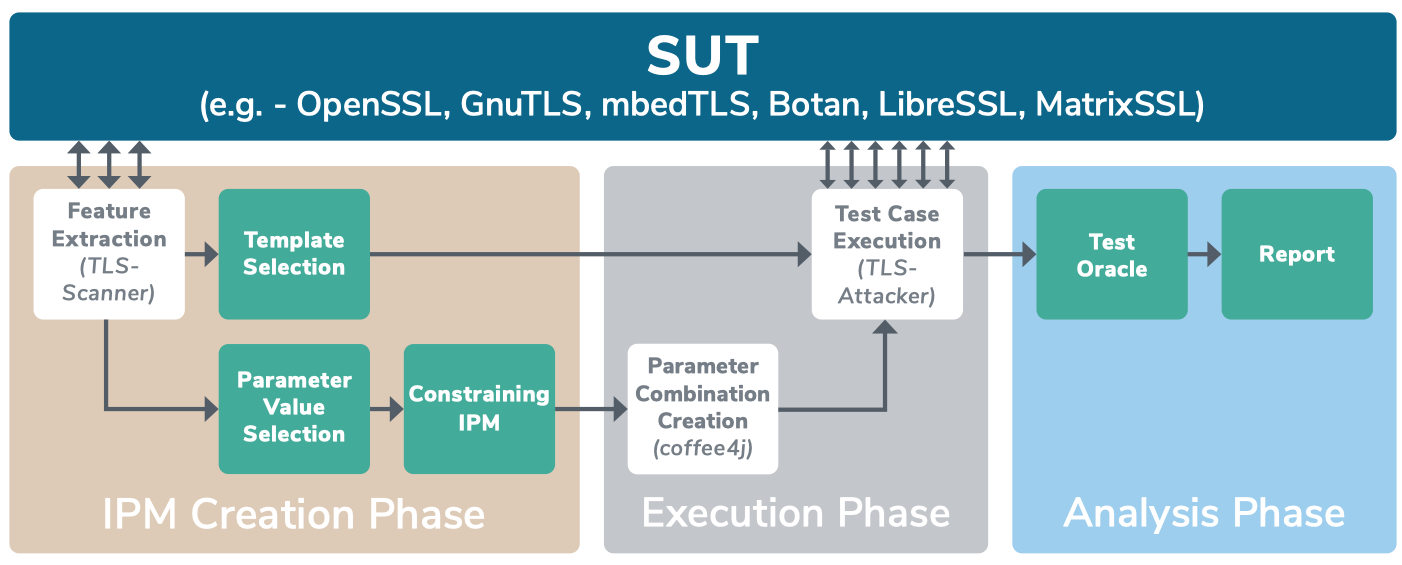Architecture
The diagram below illustrates the general architecture of TLS-Anvil, highlighting the different phases executed during a test run.
These phases are explained in detail in our USENIX Security Paper, Section 4.1.

Code-related Information
TLS-Anvil is implemented in Java and leverages several key libraries:
- JUnit 5 – Testing engine. TLS-Anvil extensively uses JUnit's extension system.
- TLS-Attacker – Core TLS stack.
- TLS-Scanner – Scanner based on TLS-Attacker, used for feature extraction.
- coffee4j – Library for combinatorial testing.
Key Concepts
Every test template ⓘ represents a JUnit test function augmented with Java annotations that define an IPM ⓘ.
Most importantly, these annotations enable the TLS-Anvil test lifecycle, which manages TLS message exchanges with the System Under Test (SUT).
TLS-Anvil Modules
TLS-Anvil is organized into two Java modules:
-
TLS-Testsuite:
The main module containing all test templates.
These templates reside in thede.rub.nds.tlstest.suite.testspackage, further subdivided into:servertestsclienttests- Tests applicable to
bothpeers
Inside these, tests are organized by relevant RFCs.
-
TLS-Test-Framework:
This module contains all JUnit extensions and the core test execution logic.
See the next chapter for an example test template and instructions on adding new templates.